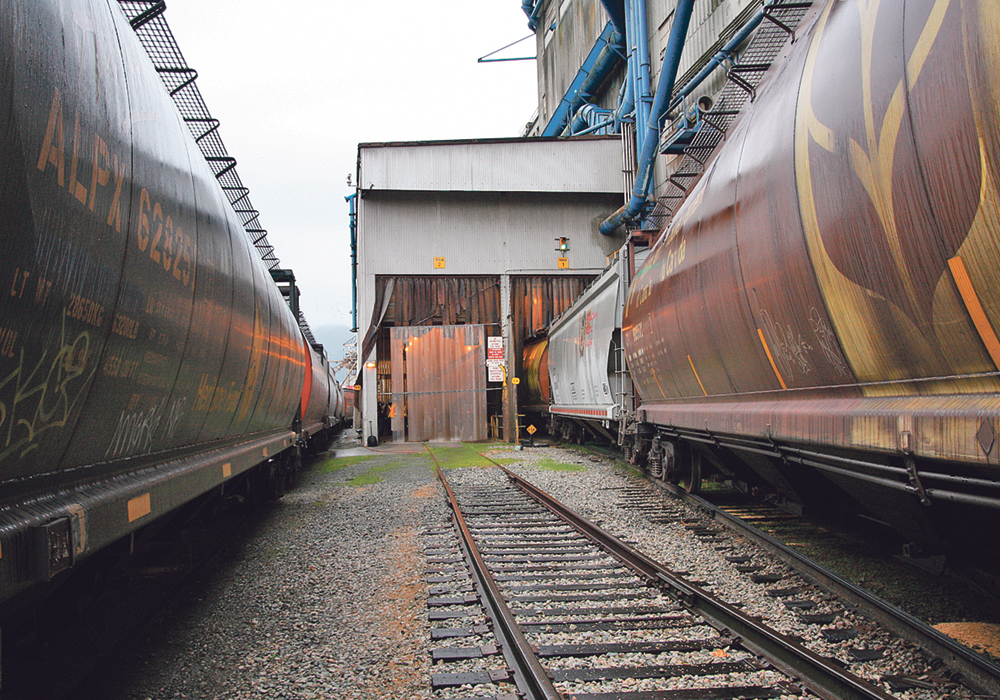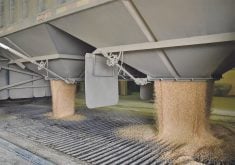When farmers discuss input costs, it’s usually about equipment, repairs, fertilizer, diesel fuel and crop protection products. One huge cost, grain freight rates, is seldom discussed because producers pay indirectly.
Freight costs used to appear as a deduction on cash grain tickets. These days, the elevator companies pay the huge cost of grain movement by rail and the cost is baked into the price they pay for grain.
When a grain company bids $7.50 a bushel for wheat, for example, there’s no indication of how much that price has been lowered by the freight bill. Suffice to say, it’s a lot and it can vary dramatically throughout the year.
Read Also

High prices see cow-calf producers rushing to incorporate
Farm accountants are reporting a steady stream of cow-calf producers rushing to get their operations incorporated ahead of selling their calves this fall.
On grain movement to the major ports, the railways operate under a revenue cap called the Maximum Revenue Entitlement (MRE). Note that it’s a revenue cap and not a rate cap. The costs for each railway are assessed and adjusted for grain volume resulting in the Volume-Related Composite Price Index (VRCPI).
For the new crop year that began Aug. 1, the VRCPI for Canadian National Railway increased by 5.39 per cent, while for Canadian Pacific Kansas City it went up 6.49 per cent. The total freight bill for the two major railways is more than $2 billion a year. With the increase to the VRCPI, it’s reasonable to assume more than $100 million in additional freight costs for this crop year versus last crop year.
So, what does it mean in dollars per tonne of grain? That’s complicated because each delivery point has a different tariff rate, the amount is different for each grain, the amount differs depending on whether shipment is to a bulk export terminal or a trans-loader and the tariff rate often changes each month or two.
Let’s use the example of wheat moving from Regina to a bulk export facility in Vancouver on CN. In July 2023, the single car rate was $53.18 a tonne. The next month, the rate increased to $66.44 to start the 2023-24 crop year. By October, the rate was $75.31 and the freight rate hit its peak in November and December at $76.34 a tonne.
Near the end of last crop year, the rate had dropped to $59.39 a tonne. Tariffs for August 2024 have not been published yet, but are expected to move higher.
Note that these are single car rates. Elevators loading 100 cars at a time get an $8 a tonne discount. Facilities with loop tracks loading 134 cars get a $10 discount.
The most common discount would be $8, but that still means a freight bill of $51 to $68 a tonne for moving wheat from Regina to Vancouver. That’s $1.39 to $1.85 a bushel deducted from the price paid to producers.
The two major railways carefully manage their revenue cap. They don’t want to end up earning less than they are allowed, leaving money on the table. They often err just a bit on the high side and then the amount exceeding the MRE plus a small penalty must be paid to the Western Grains Research Foundation.
Freight costs are one of the largest farm expenses, but they are largely out of sight and therefore out of mind for farmers because the bill is paid indirectly. From time to time, various farm groups have called for a full costing review in the belief the railways may be making unreasonable profits. However, railway service disruptions garner a lot more attention than freight costs.
Kevin Hursh is an agricultural journalist, consultant and farmer. He can be reached by e-mail at kevin@hursh.ca.
















